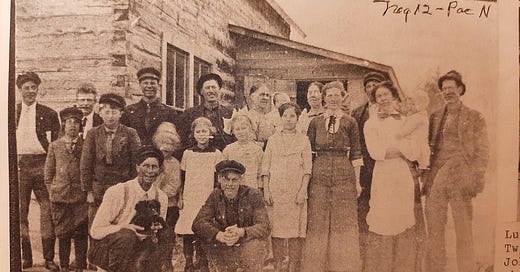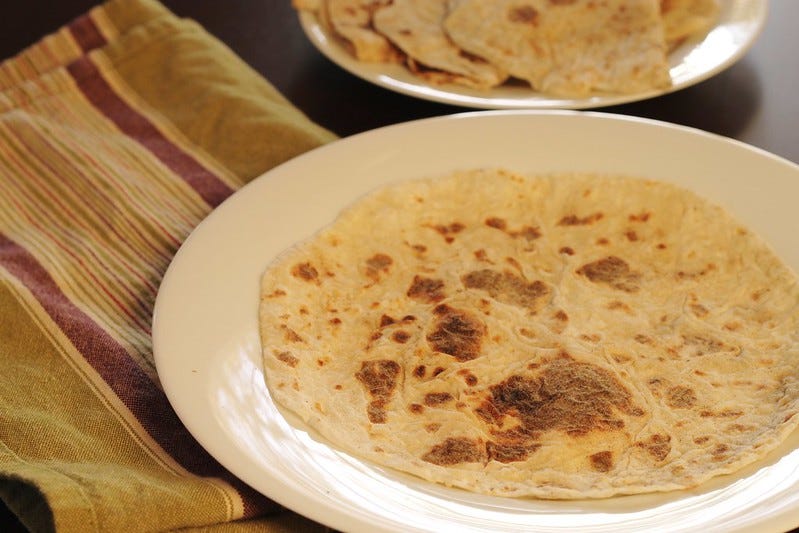It was 110 years ago this month when my great-grandparents and three other Swedish families dressed up in their Sunday best for an oyster stew party. This group photograph was taken of their midwinter celebration. Canadian Northern Railway delivered oysters on ice to this remote area of northern Minnesota in 1914. Yes, oysters.
While the other photographs of Emma and Charlie Kling from this time period I’ve seen — felling logs and plowing fields with oxen and cutting hay and wheat with a scythe by hand — confirmed my sense their lives were not easy, here, I see joy. Real smiles on their faces.
Turns out Scandinavians have a thing for oysters and along the western coast of Sweden there are beds of them which have been growing in their wild state for centuries.

Growing up I learned little about my Swedish ancestry besides knowing how to say thanks: tack så mycket. I went to kindergarten at Jenny Lind Elementary School in Minneapolis but I didn’t know anything about my school’s namesake — an opera star from Stockholm who visited in 1850. It wasn’t until much later that I learned about the history of peasants and farmers fleeing Sweden the last half of the nineteenth century for the promise of free land in America. I mostly thought of myself as Swedish when it came to lefse.
And frankly, I didn’t have to think much about my Swedish heritage. It wasn’t until the first Christmas I spent together with the love of my life, Sam, and his family that I realized how much I took being Swedish for granted. We gathered with his sister, brother-in-law, niece and nephew at his parents’ house for dinner. His mother served lasagna. Lasagna! They weren’t even Italian.
Where was the pickled herring, the ham, the turkey, the Swedish meatballs and potato sausage? No mashed potatoes and gravy, no rice pudding, no pickled beets. Not even a plate filled with holiday sweets.
What I missed most was lefse. Made from mashed potatoes, cream and flour, lefse is the supple flatbread of Scandinavians. I didn’t say a word to my in-laws or to Sam, but it wasn’t Christmas without Mom’s homemade lefse.
The photograph of my relatives partying in 1914 reminded me of when Sam asked me to make oyster stew for Christmas. I think I gagged. Ew. I had tried eating an oyster once. This family food tradition seemed entirely foreign to me. His mother made it for him. I passed the dish.
How little I knew then about my own family history. And still don’t know. How muddled my thoughts and feelings have been about my identity as a great-granddaughter of Swedish immigrants. Is it because I’m Swedish that I love lefse? Then why do I think lutefisk tastes like boiled snot? Do I credit my Scandinavian genes for sustenance through winter? Then why don’t I want to go outside when it’s so cold? Give me sausage and meatballs, pretty painted red horses and a flag of blue. Swede enough?
Oysters, to my surprise, are a part of my family’s Scandinavian history in Minnesota which I knew nothing about. But this photo forced me to think about what has been so easily forgotten. To think about what gets passed down and what passes away. Whatever stories of destitution and desperation they left behind in Sweden were swiftly erased by time and those oyster stew smiles.






What a wonderful peek into your family's food traditions! My Norwegian family makes vaffler, a kind of rich waffle dough, for sandwiches. They were a staple of our hikes in the fjord country where my family is from. Spread with butter while warm, and top with gjetost sliced thin, fold over, put them in your pack with apples picked fresh from the tree on the fjord-side farm outside Alvik on Hardangerfjord, and you're set for an all-day ramble!
I do still believe the meatball sauce you taught us is the best - the mixture of grape jelly, currant jelly, chili sauce and cocktail sauce slowly warmed over meatballs is a favorite appetizer at my house . . . and I thank you for this recipe.